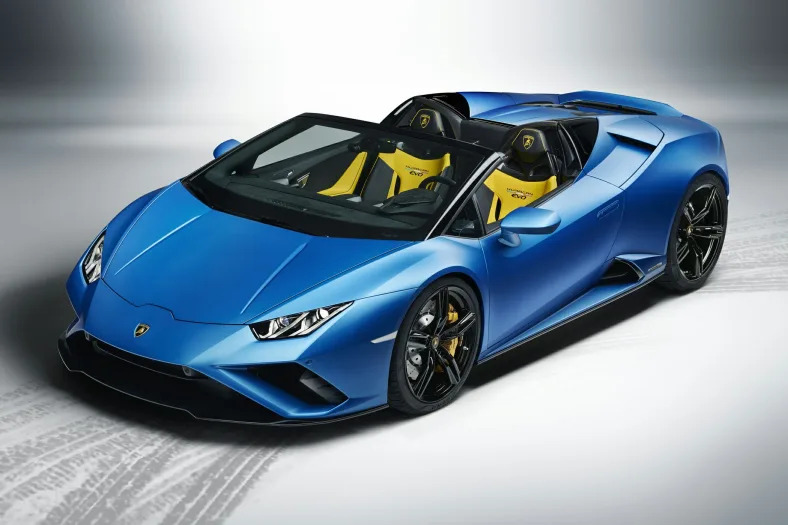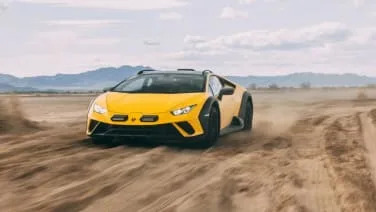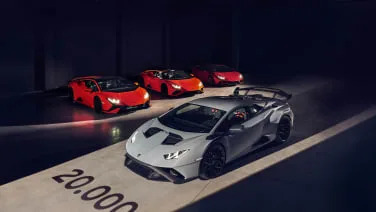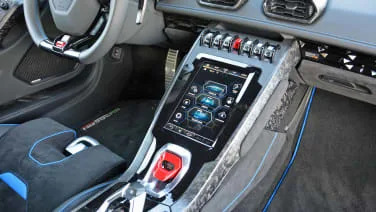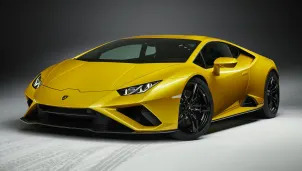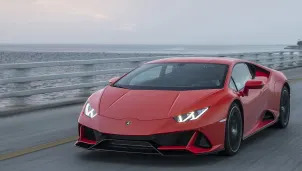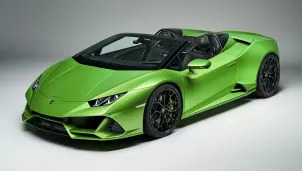Base 2dr Rear-Wheel Drive Spyder
2021 Lamborghini Huracan EVO
LE CASTELLET, France — Growing up in the 1990s, the Italian supercars I read about sounded like the automotive equivalent of kayaking over a waterfall — thrilling, unforgettable, and potentially very hazardous. The industry's elites were often described as cramped, unpredictable, and generally finicky but extremely rewarding for the few skilled enough to tame them. It's a stigma that still hovers above the supercar segment like a dark cloud in 2021, yet with a handful of notable exceptions, it hasn't been accurate in many years. It takes little more than a lively jaunt in a 2021 Lamborghini Huracán Evo RWD to spot how Italy's unique breed of road weapon has evolved over the past few decades. Autoblog has spent time in the Huracán Evo before, but it was in an all-wheel-drive model that we put through its paces on the Willow Springs track in Southern California. Fast-forward to 2021, and I'm in a rear-wheel-drive coupe on the picturesque winding roads surrounding the Paul Ricard circuit in Southern France. I couldn't sneak my way onto the track for a few laps because Super Trofeo and GT3-spec variants of the Huracán hogged it all weekend. Several carmakers positioned all over the automotive spectrum have used the Evo designation. In Lamborghini-speak, it denotes not a rally-bred sports sedan but an evolution of the Huracán with subtle design tweaks that add downforce and increase the amount of cooling air channeled to the engine bay. It still looks like a Huracán, but you don't need a magnifying glass to tell the updated model apart from its predecessor, especially from the back. Lamborghini saves scissor doors for its V12-powered models, like the Aventador S, so the Huracán's swing out like in a normal car's. Once inside, the first thing you notice is that it feels like a proper luxury car. The cabin is dominated by Alcantara, leather, and a type of carbon fiber called Forged Composites (which was developed in-house by the brand). It's all very well put together; the fit and finish is excellent. In the driver's seat, you face a digital instrument cluster whose layout changes depending on the driving mode selected (they're called Strada, Sport, and Corsa, respectively) and a three-spoke steering wheel with a switch that lets you select the three aforementioned profiles. Even a supercar needs technology in 2021. Stuffing a mammoth engine in a lightweight chassis hidden under an attention-grabbing body is no longer enough to lure enthusiasts. Lamborghini knows this, so one of the tricks it taught the Huracán before assigning it the Evo nameplate is a new infotainment system displayed on an 8.4-inch touchscreen. This is a major update, because the original Huracán released in 2014 didn't have a touchscreen. Its infotainment system was displayed in the instrument cluster. Specific to Lamborghini, the software is quick, straightforward to navigate, and the screen's graphics are almost as sharp as the exterior design. Better yet for technophiles, Amazon's Alexa voice assistant is programmed directly into the system. Embedding a tablet-like …
Full Review
LE CASTELLET, France — Growing up in the 1990s, the Italian supercars I read about sounded like the automotive equivalent of kayaking over a waterfall — thrilling, unforgettable, and potentially very hazardous. The industry's elites were often described as cramped, unpredictable, and generally finicky but extremely rewarding for the few skilled enough to tame them. It's a stigma that still hovers above the supercar segment like a dark cloud in 2021, yet with a handful of notable exceptions, it hasn't been accurate in many years. It takes little more than a lively jaunt in a 2021 Lamborghini Huracán Evo RWD to spot how Italy's unique breed of road weapon has evolved over the past few decades. Autoblog has spent time in the Huracán Evo before, but it was in an all-wheel-drive model that we put through its paces on the Willow Springs track in Southern California. Fast-forward to 2021, and I'm in a rear-wheel-drive coupe on the picturesque winding roads surrounding the Paul Ricard circuit in Southern France. I couldn't sneak my way onto the track for a few laps because Super Trofeo and GT3-spec variants of the Huracán hogged it all weekend. Several carmakers positioned all over the automotive spectrum have used the Evo designation. In Lamborghini-speak, it denotes not a rally-bred sports sedan but an evolution of the Huracán with subtle design tweaks that add downforce and increase the amount of cooling air channeled to the engine bay. It still looks like a Huracán, but you don't need a magnifying glass to tell the updated model apart from its predecessor, especially from the back. Lamborghini saves scissor doors for its V12-powered models, like the Aventador S, so the Huracán's swing out like in a normal car's. Once inside, the first thing you notice is that it feels like a proper luxury car. The cabin is dominated by Alcantara, leather, and a type of carbon fiber called Forged Composites (which was developed in-house by the brand). It's all very well put together; the fit and finish is excellent. In the driver's seat, you face a digital instrument cluster whose layout changes depending on the driving mode selected (they're called Strada, Sport, and Corsa, respectively) and a three-spoke steering wheel with a switch that lets you select the three aforementioned profiles. Even a supercar needs technology in 2021. Stuffing a mammoth engine in a lightweight chassis hidden under an attention-grabbing body is no longer enough to lure enthusiasts. Lamborghini knows this, so one of the tricks it taught the Huracán before assigning it the Evo nameplate is a new infotainment system displayed on an 8.4-inch touchscreen. This is a major update, because the original Huracán released in 2014 didn't have a touchscreen. Its infotainment system was displayed in the instrument cluster. Specific to Lamborghini, the software is quick, straightforward to navigate, and the screen's graphics are almost as sharp as the exterior design. Better yet for technophiles, Amazon's Alexa voice assistant is programmed directly into the system. Embedding a tablet-like …
Hide Full Review
Hide Full Review
Retail Price
$229,428
MSRP / Window Sticker Price
| Engine | 5.2L V-10 |
| MPG | 13 City / 18 Hwy |
| Seating | 2 Passengers |
| Transmission | 7-spd auto-shift man w/OD |
| Power | 602 @ 8000 rpm |
| Drivetrain | rear-wheel |
Smart Buy Program is powered by 

